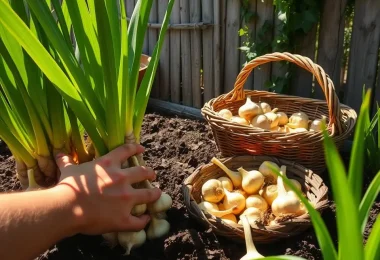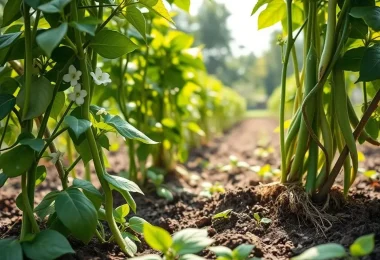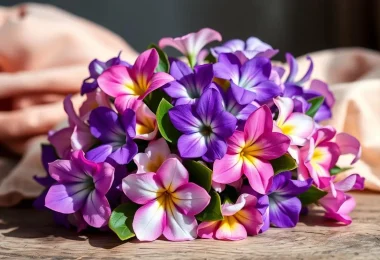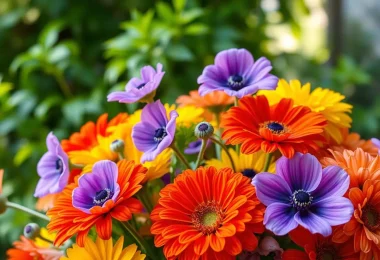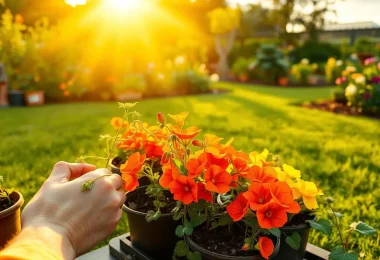Viburnum is a diverse group of flowering shrubs that can make your garden beautiful. They bloom in spring and turn vibrant in fall. This makes them a great choice for any outdoor space.
Explore the world of viburnum and see how they can make your garden special. These plants can turn your garden into a beautiful place.
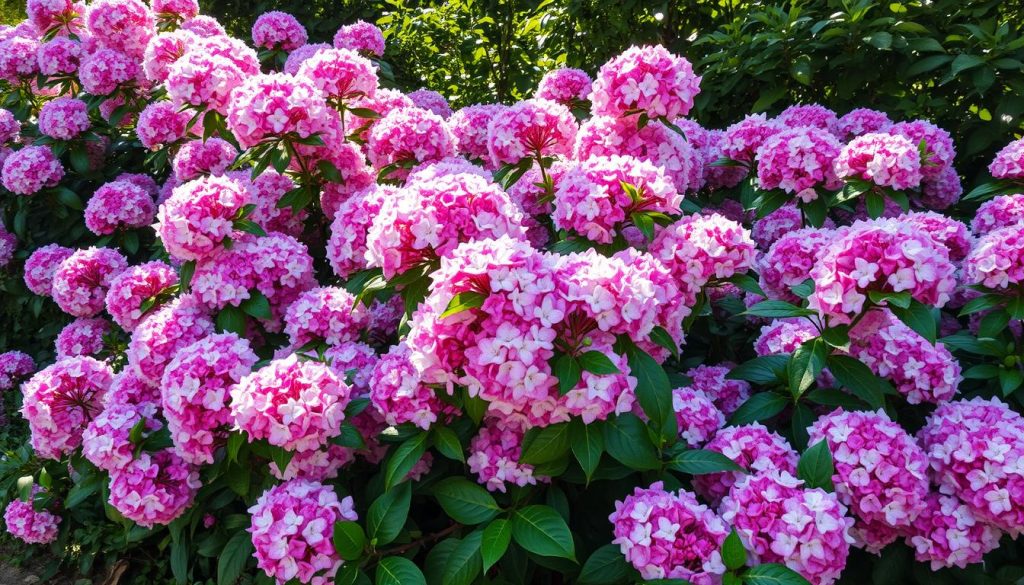
Key Takeaways
- Viburnums are a diverse genus of flowering shrubs that offer year-round appeal in the garden
- These plants feature a range of stunning blooms, followed by eye-catching fall foliage
- Viburnums are highly adaptable and can thrive in a variety of garden settings
- Incorporating viburnums into your landscape can add color, texture, and visual interest
- Proper selection, planting, and care are essential for successfully growing viburnums
What is Viburnum?
Viburnum is a group of over 150 species of shrubs. They belong to the Adoxaceae family. These plants are found in temperate areas across the Northern Hemisphere. They add beauty to gardens with their foliage, flowers, and growth habits.
Introduction to the Viburnum Genus
Viburnums are known for their beauty and adaptability. They can be small shrubs or grow into trees. This makes them great for many garden designs. Their flowers are a highlight, ranging from delicate clusters to large, showy blooms.
Viburnum Species and Their Characteristics
There are many viburnum species and cultivars. Each has its own special traits. Here are a few examples:
- Viburnum tinus, an evergreen with dark green leaves and fragrant, pinkish-white flowers.
- Viburnum opulus, a deciduous shrub with white blooms and bright red berries loved by birds.
- Viburnum carlesii, a compact shrub with fragrant, pinkish-white flowers in early spring.
Knowing the unique features of different viburnum species helps choose the best for your garden.
Viburnum’s Ornamental Appeal
Viburnums are loved for their beautiful leaves and flowers. These shrubs bring joy all year with their changing looks.
Stunning Foliage and Blooms
Many viburnums have shiny green leaves that turn into stunning autumn colors. As the seasons change, the leaves turn red, orange, and purple. This adds a lively touch to gardens.
In spring and early summer, viburnums show off their flowers. These flowers are white or pink and smell sweet. They attract bees and butterflies, and they’re a treat for the eyes.
| Viburnum Species | Foliage Color | Bloom Color |
|---|---|---|
| Viburnum tinus | Evergreen, glossy green | White to pink |
| Viburnum opulus | Deciduous, green to red, orange, purple | White |
| Viburnum davidii | Evergreen, dark green | White |
Viburnums are a top pick for garden plants. They make any outdoor area more beautiful.
“Viburnums are the unsung heroes of the garden, providing year-round interest and an elegant touch to any landscape.”
Benefits of Growing Viburnum
Viburnums are not just pretty garden plants. They also have many practical benefits for your home landscape. These shrubs are tough, need little care, and grow well in different soils and conditions.
One big plus of viburnums is they attract bees and butterflies. Their flowers are full of nectar, which is great food for these important pollinators. This helps keep your garden ecosystem healthy.
Viburnums also give shelter and food to wildlife. This makes them a favorite among gardeners who want to help local animals. Birds, especially songbirds, love to nest in the dense leaves of viburnum shrubs.
Another great thing about viburnums is how easy they are to care for. They don’t need much pruning or attention, which is perfect for busy people or new gardeners. They also do well in many soils and can handle dry spells, making them a reliable choice for any garden.
| Benefit | Description |
|---|---|
| Pollinator Attraction | Viburnums produce nectar-rich blooms that attract bees, butterflies, and other pollinators to the garden. |
| Wildlife Habitat | Viburnums provide shelter and food sources for a variety of birds and other wildlife. |
| Low Maintenance | Viburnums are generally resilient and require minimal pruning or care, making them a great choice for busy gardeners. |
| Drought Tolerance | Many viburnum species are drought-tolerant, making them well-suited for gardens with limited water resources. |
Adding viburnums to your garden brings beauty and benefits. They help pollinators, wildlife, and make your outdoor space healthier and more sustainable.
Choosing the Right Viburnum for Your Garden
When picking a viburnum for your garden, think about a few key things. These include the plant’s size, how it grows, and what kind of sun it likes. Knowing these details helps you pick the best viburnum for your garden plant collection.
Factors to Consider When Selecting Viburnum
Choosing the right viburnum means looking at a few important factors:
- Mature Size: Viburnums can be small shrubs or big trees. Pick one that fits your garden space.
- Growth Habits: Some viburnums grow straight up, while others spread out. Think about how it will look in your garden.
- Sunlight Requirements: Different viburnums need different amounts of sun. Make sure it matches your garden conditions.
- Hardiness Zones: Choose a viburnum that can handle your local climate and winter cold.
Looking at all the viburnum types and varieties can help you find the perfect one. It will match your garden plant style and fit right in.
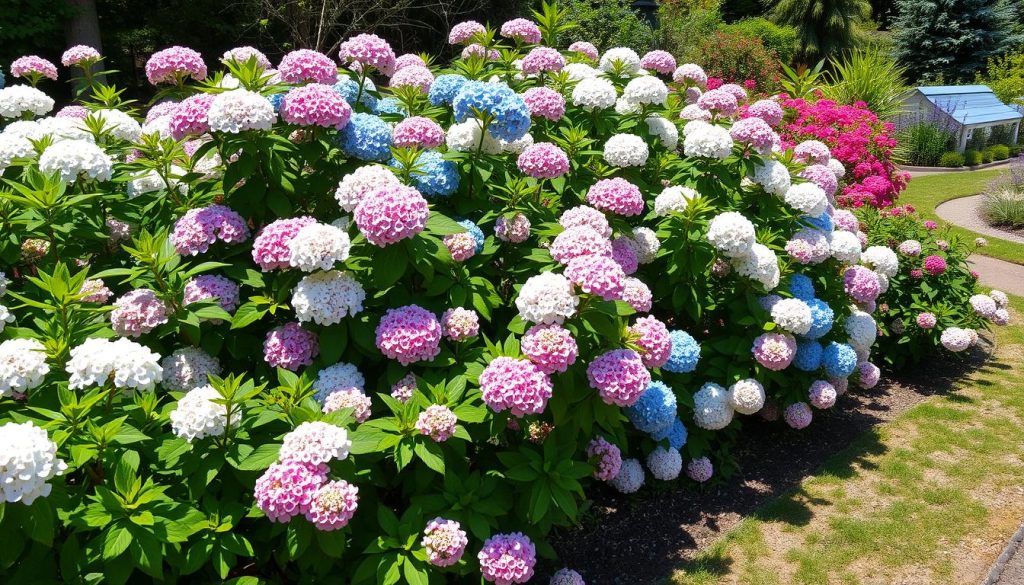
| Viburnum Species | Mature Size | Sunlight Needs | Hardiness Zones |
|---|---|---|---|
| Viburnum carlesii | 6-8 feet tall | Full sun to partial shade | 5-9 |
| Viburnum opulus | 10-12 feet tall | Full sun to partial shade | 3-8 |
| Viburnum tinus | 6-10 feet tall | Partial shade to full sun | 7-10 |
“Selecting the right viburnum is not just about finding a beautiful plant, but about choosing one that will thrive and enhance the overall look and health of your garden.”
Planting and Caring for Viburnum
Proper planting and care are key for your viburnum plants’ health. Whether you’re adding them to your garden or caring for existing ones, knowing their needs is crucial. This ensures they grow well.
Soil Preparation and Planting Tips
Viburnums love well-drained, slightly acidic soil with lots of organic matter. Before planting, add compost or other organic materials to the soil. This improves drainage and nutrient levels.
Choose a spot that gets partial shade to full sun, based on the viburnum type. When planting, dig a hole twice as wide as the root ball and the same depth as the roots. Place the plant in the hole, making sure the root ball is level with the soil. Fill the hole with the original soil and water well to settle the roots.
Watering and Fertilizing Requirements
Viburnums need consistent moisture, especially the first year after planting. Water them deeply, about 1 inch per week. Adjust as needed to keep the soil moist but not too wet.
For healthy growth and blooms, use a balanced, slow-release fertilizer in early spring. Follow the instructions carefully, as needs can vary by variety and local conditions.
| Viburnum Planting and Care | Recommendations |
|---|---|
| Soil Preparation | Well-drained, slightly acidic soil rich in organic matter |
| Planting Location | Partial shade to full sun, depending on variety |
| Watering | Consistent moisture, especially during first year |
| Fertilizing | Balanced, slow-release fertilizer in early spring |
By following these guidelines, your viburnums will thrive. They’ll add beauty to your garden plants for many years.
Pruning and Maintenance
To keep your viburnum plants looking great, you need to prune and maintain them regularly. This care boosts their beauty and flower power. These garden plants are very versatile.
Pruning viburnum means cutting out dead, damaged, or too crowded branches. This makes the plant look better and grow more. Prune in late winter or early spring, just before new growth starts.
- Find and cut out dead or damaged branches, cutting to a healthy bud or branch.
- Thin out crowded stems to let air and light in better.
- Shape the plant gently, keeping its natural look and size.
- Fix any branches that are growing the wrong way or crossing over, for a balanced look.
Watering and fertilizing your viburnum garden plants also helps them stay healthy. Keep the soil moist, especially when it’s dry. Feed them a balanced fertilizer in early spring to help them grow and bloom well.
| Pruning Technique | Purpose |
|---|---|
| Removing dead or damaged branches | Improve plant’s appearance and encourage new growth |
| Thinning overcrowded stems | Enhance air circulation and light penetration |
| Gentle shaping | Maintain the plant’s natural form and size |
| Pruning wayward or crossing branches | Achieve a balanced, attractive appearance |
By following these tips, your viburnum garden plants will stay healthy, vibrant, and beautiful for a long time.
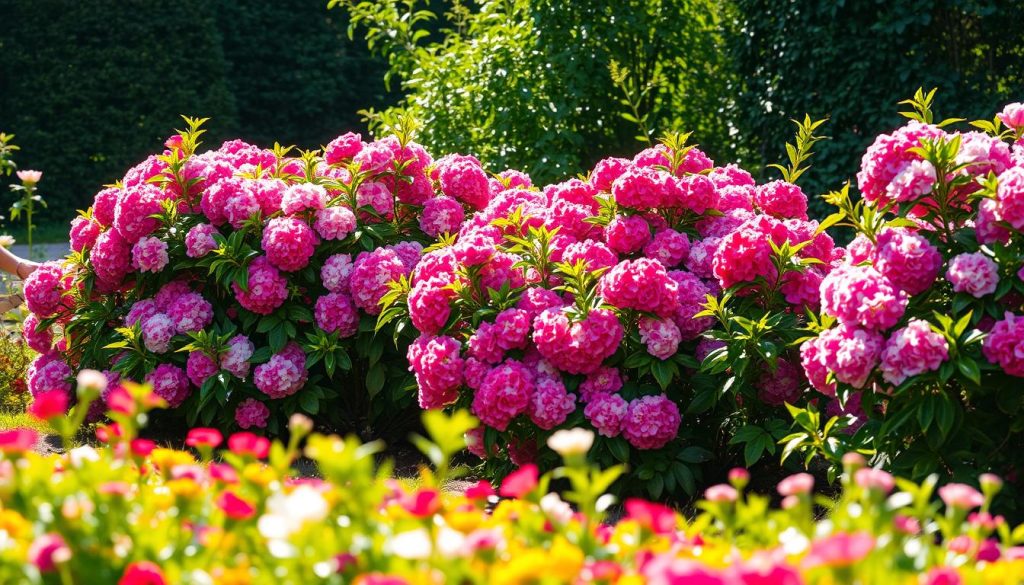
Viburnum Varieties for Different Garden Styles
Viburnums are versatile shrubs that fit many garden styles. They can make lush hedges or stand as beautiful specimen plants. These hardy plants offer many options for your garden.
Viburnums for Hedges and Screens
Viburnum tinus and Viburnum opulus are great for hedges or screens. They grow thick, making a solid border. Their leaves are glossy and evergreen, or they turn stunning colors in fall.
Viburnums for Borders and Foundations
Some viburnum types are perfect for borders or foundation plantings. Viburnum davidii has unique leaves and grows compactly. Viburnum carlesii blooms in early spring with fragrant flowers, adding elegance.
| Viburnum Variety | Ideal Garden Application | Key Characteristics |
|---|---|---|
| Viburnum tinus | Hedges and Screens | Evergreen foliage, robust growth habit |
| Viburnum opulus | Hedges and Screens | Stunning fall color, excellent for privacy |
| Viburnum davidii | Borders and Foundations | Compact, rounded growth, leathery leaves |
| Viburnum carlesii | Borders and Foundations | Fragrant, snowball-like blooms in spring |
Choosing the right viburnum varieties can make your garden beautiful and functional. It meets your specific needs and design preferences.
Pests and Diseases Affecting Viburnum
Viburnums are tough garden plants, but they can still get pests and diseases. Knowing the common problems and how to manage them helps keep your viburnum plants healthy and growing well.
Common Pests and Their Management
Aphids are a big problem for viburnums. These tiny insects suck sap, causing leaves to curl and plants to grow slowly. Catching and removing aphids quickly, either by hand or with insecticidal soap, can solve this issue.
Spider mites are another issue for garden plants like viburnum. They eat leaves, leaving them speckled or stippled. Keeping plants well-ventilated and using a strong water spray can help fight spider mites.
Fungal diseases, like powdery mildew and leaf spots, can also harm viburnum plants. To fight these, space plants well, prune sick leaves, and use fungicides. This helps control the disease and stops it from spreading.
| Pest/Disease | Symptoms | Management Strategies |
|---|---|---|
| Aphids | Leaf curling, stunted growth | Manual removal, insecticidal soap |
| Spider Mites | Speckled or stippled foliage | Improve air circulation, high-pressure water spray |
| Powdery Mildew | White, powdery growth on leaves | Pruning, fungicides |
| Leaf Spots | Discolored, spotted leaves | Pruning, fungicides |
By watching closely and using the right pest and disease control, gardeners can keep their viburnum plants healthy. This way, they can continue to grow well in the garden.
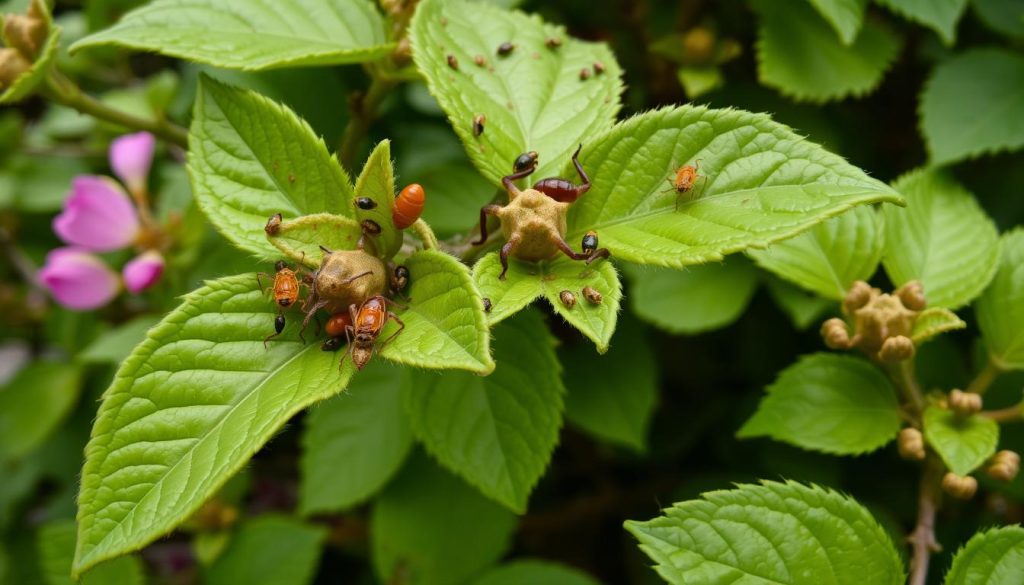
Companion Plants for Viburnum
Viburnum plants are vibrant and versatile. They can be paired with many garden plants to make your garden stunning. By choosing plants that grow well together and look good, your garden will look better and feel more connected.
Ornamental grasses like Miscanthus or Panicum look great with viburnums. Their flowing movements highlight viburnums’ strong, layered leaves. Also, flowers like Echinacea, Heuchera, and Nepeta add color and texture, matching viburnums’ bright blooms.
For a more formal look, pair viburnums with shrubs like Hydrangea, Spirea, or Abelia. These shrubs make beautiful hedges, borders, or foundation plants. They add structure and beauty to your outdoor space.
| Companion Plant | Characteristics | Complementary Features |
|---|---|---|
| Miscanthus | Ornamental grass with graceful, swaying foliage | Accentuates the layered, textural foliage of viburnums |
| Echinacea | Perennial flower with vibrant blooms | Adds pops of color to complement viburnum’s flowers |
| Hydrangea | Compact, mounded shrub with showy blooms | Creates visually striking hedges or foundation plantings |
By picking the right plants, you can make a beautiful garden. Viburnums will be the star, surrounded by plants that enhance their beauty.
Viburnum Opulus: A Versatile and Hardy Species
Viburnum opulus, also known as the European cranberry bush or snowball bush, is a standout in the viburnum family. It’s known for its large, globe-shaped flower clusters that bloom in the spring. Its foliage also changes color beautifully in the fall.
This shrub is known for its hardiness. It can grow well in many conditions, from full sun to partial shade. It also does well in different soils, making it great for many gardens.
Viburnum opulus is not just beautiful; it’s also practical. Its dense growth makes it perfect for hedges or screens. It’s also easy to care for, thanks to its toughness.
| Characteristic | Description |
|---|---|
| Flower Clusters | Large, globe-shaped, blooming in spring |
| Foliage | Attractive, turning stunning colors in fall |
| Growth Habit | Dense, bushy, making it suitable for hedges and screens |
| Hardiness | Highly adaptable, thriving in a variety of growing conditions |
Viburnum opulus is a great choice for any garden. It adds beauty, function, and durability. If you want to enhance your garden, consider this amazing viburnum species.
Viburnum Tinus: An Evergreen Delight
Viburnum tinus, also known as laurustinus, is an evergreen shrub that adds beauty to gardens all year. Its glossy, deep green leaves and fragrant, pinkish-white flowers stand out. It’s especially loved in mild climates where it stays green all the time.
Viburnum tinus can grow well in many soil types, from alkaline to acidic. This makes it easy for gardeners to use it in different designs.
This shrub is not just pretty; it’s also practical. Its dense leaves can block wind or hide views. Plus, its flowers attract bees and butterflies.
Seasonal Highlights
Viburnum tinus is a star all year long, with each season offering something special:
- Spring: It blooms with fragrant, pinkish-white flowers, making a beautiful sight.
- Summer: Its glossy leaves add a lush look to the garden.
- Autumn: Some types of viburnum tinus show off bright red or purple leaves before they fall.
- Winter: Its evergreen nature keeps it looking good even when it’s cold.
If you want your garden to be interesting all year, viburnum tinus is a great choice. It’s adaptable, beautiful, and useful, making it a top pick for gardeners.
“Viburnum tinus is a true four-season shrub, offering something special in every phase of the gardening year.”
Incorporating Viburnum into Your Garden Design
Viburnums are great for making your garden look better and work better. They fit into many garden styles. You can use them to make stunning hedges, screens, or eye-catching plants. They also add depth and texture to mixed borders.
Creative Ideas for Using Viburnum
Here are some ways to use viburnums in your garden:
- Hedge and Screen Plantings: Viburnums are perfect for hedges and screens. They offer privacy, wind protection, and beauty all year.
- Specimen Plantings: Make viburnums the stars of your garden. Their unique shapes and colors will stand out.
- Mixed Borders: Add viburnums to mixed borders. They blend well with other plants and enhance the look.
- Foundation Plantings: Place viburnums near your home’s foundation. They make the entrance look welcoming and highlight your home’s features.
- Container Gardens: Use small viburnum varieties in containers. This way, you can enjoy them on patios, decks, or balconies.
| Viburnum Variety | Garden Style | Key Features |
|---|---|---|
| Viburnum tinus | Hedges, Screens, Foundation Plantings | Evergreen foliage, Compact growth habit, Reliable blooms |
| Viburnum opulus | Specimen Plantings, Mixed Borders | Striking fall foliage, Showy white flowers, Colorful berries |
| Viburnum carlesii | Specimen Plantings, Mixed Borders | Fragrant pink or white blooms, Compact size, Attractive foliage |
By adding viburnums to your garden, you can make it both beautiful and useful. These plants show off their beauty and versatility in your outdoor space.
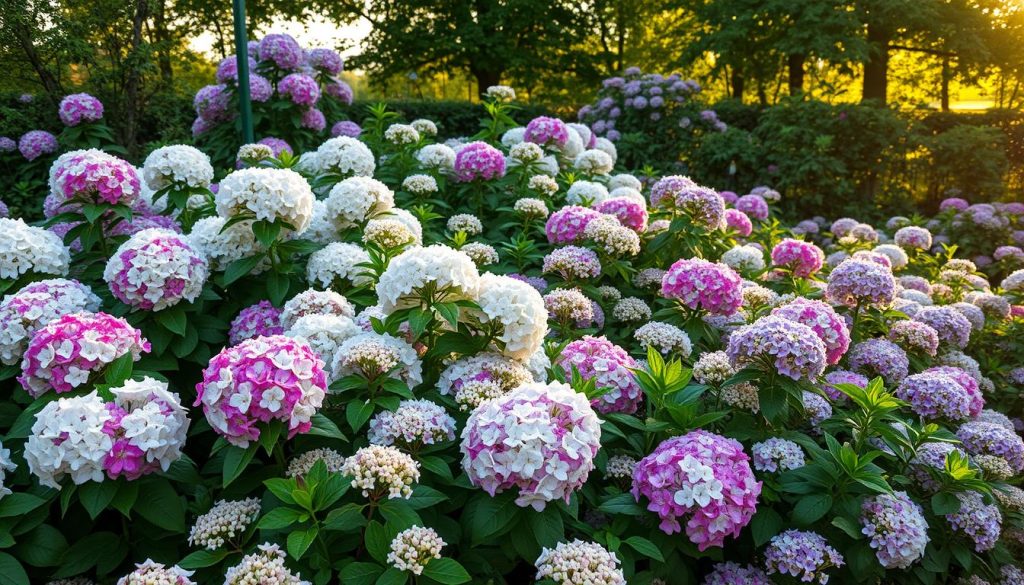
“Viburnums add a sense of charm and sophistication to any garden, with their diverse forms, colors, and textures.” – Jane Doe, Garden Designer
Frequently Asked Questions About Growing Viburnum
Gardeners often wonder about growing viburnum. They ask about the best places to plant them and how to deal with pests and diseases. This section answers these questions to help you grow viburnums in your garden.
Many ask about viburnum’s water needs. These plants like moist, well-drained soil but can handle different types. Water them often when they’re new, then less often when they’re established.
Pruning is another common topic. Light pruning helps keep viburnums looking good and encourages more growth. But, avoid heavy pruning to keep the plant healthy and flowering well. Prune in late winter or early spring, before new growth starts.
FAQ
What are the different species of viburnum?
Viburnum has over 150 species, each unique. Popular ones include Viburnum tinus (laurustinus) and Viburnum opulus (European cranberry bush). Others are Viburnum davidii and Viburnum plicatum (Japanese snowball).
What are the main benefits of growing viburnum in the garden?
Viburnums add beauty to gardens all year. They are drought-tolerant and attract pollinators. They also provide food and shelter for wildlife.
How do I choose the right viburnum for my garden?
Choose based on size, growth habit, sunlight, and hardiness zone. This ensures the plant thrives in your garden.
How do I properly plant and care for a viburnum?
Start with good soil and the right spot. Water and fertilize correctly. These steps keep your viburnum healthy and strong.
What are some common pests and diseases that can affect viburnums?
Viburnums face issues like aphids and spider mites. Fungal diseases are also common. Knowing how to manage these problems is key to keeping your plants healthy.
Can I use viburnums for hedges or screens?
Yes, Viburnum tinus and Viburnum opulus work well for hedges or screens. They grow compactly and adapt to many conditions.
How do I prune and maintain my viburnum?
Prune regularly to remove dead branches and thin stems. This improves the plant’s look and flowering.
What are some good companion plants to grow with viburnums?
Viburnums pair well with other shrubs, perennials, or grasses. Choose plants that share growing needs and look good together.
What makes Viburnum opulus (European cranberry bush) a versatile and hardy species?
Viburnum opulus has large flower clusters and attractive leaves. It’s hardy and grows well in many conditions, making it great for gardens.
What are the key features of Viburnum tinus (laurustinus)?
Viburnum tinus is an evergreen with glossy leaves and fragrant flowers. It’s especially beautiful in mild climates.



